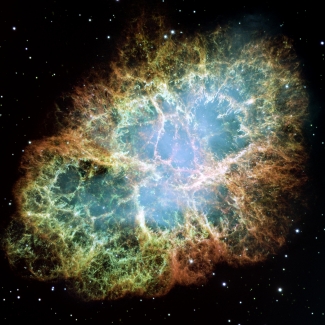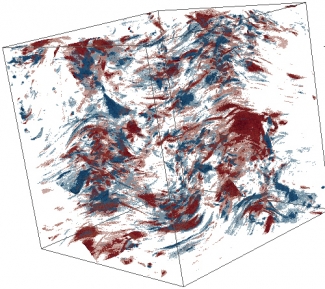The lovely Crab Nebula was created by a supernova and its spinning-neutron-star remnant known as a pulsar. Pulsar wind nebulae, such as the Crab, shine because they contain plasmas of charged particles, such as electrons and positrons, traveling at near the speed of light. A key question in astrophysics has long been: What process accelerates some of the charged particles in plasmas to energies much higher than the average particle energy, giving them near light speeds? It can’t be collisions because the particles are simply too far apart to run into each other. It can’t just be high temperature, because cold plasma can also contain a small population of particles that move at a significant fraction of the speed of light. But, it must be something fairly ordinary, because relativistic plasmas are not uncommon.
Research associate Vladimir Zhdankin, Fellow Mitch Begelman and their University of Colorado Boulder colleagues believe they have found the answer.
“The physical mechanism responsible for accelerating these particles may have been hiding in plain sight,” Zhdankin explained. “The turbulence that inevitably forms in astrophysical plasmas can be an efficient particle accelerator.”
To test this idea, the researchers performed a massive supercomputer-based simulation of the effects of turbulence on relativistic plasmas in which the particles do not collide, but rather interact through their mutual electric and magnetic fields. The simulation showed how the energy of large-scale motions and magnetic fields starts a process that leads to a fraction of the particles gaining a massive amount of energy. As the turbulent motions approach relativistic speeds, particle acceleration becomes more efficient––sufficiently efficient to explain the acceleration of the charged particles in the plasma to near light speeds.





